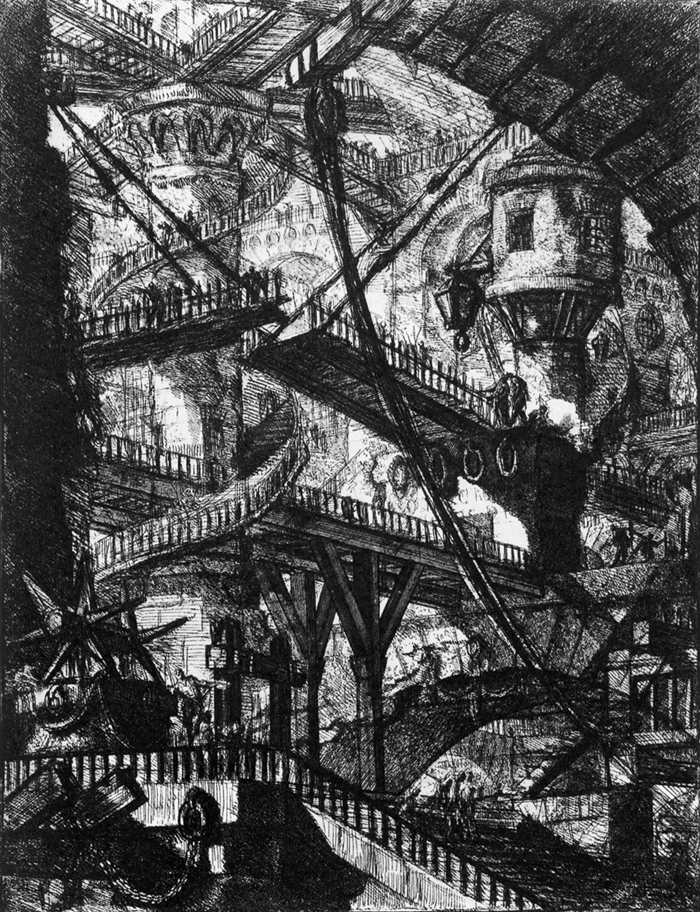
_-_WGA17846.jpg)
The immensity and ambiguity of these structures reinforces the sense of wonderment that inspired generations of artists, writers, and others to reassess the majesty and grandeur of classical design. Piranesi and the infinite prisons Piranesi was an extraordinarily talented artist who came to be considered the best known engraver and etcher of the 18th century.
#PIRANESI PRISONS SERIES#
Populated with indistinguishable figures that emphasize the scale and complexity of the scenes, the final series features greater detail and stronger tonal contrasts, enhancing the works’ sinister character.

These etchings were issued as a collection of fourteen around 1749–50 and then reissued-after significant reworking-as a set of sixteen in 1761. The artist employed the same strategy-representing realistic settings imbued with an innovative creative spirit-in several other works. Chief among them is his highly unusual series of prints called Imaginary Prisons. A native of Venice, Piranesi went to Rome at age twenty and where he remained for the. Piranesi’s oeuvre reflects a singular combination of remarkable imagination and a deep understanding of construction, which helped to cultivate an unprecedented appreciation of Roman architecture. The Round Tower, from Carceri dinvenzione (Imaginary Prisons). Grass of uniform colour and uniform length. Contents 1 A Prison of Mazes 2 The Rules 3 The Chaplains of Piranesi 4 An Identity Uncovered 5 References A Prison of Mazes 'Polyhedric sculptures, the dimensions eye-wateringly off. He derived the principal inspiration for this vast production of etchings from firsthand examinations of classical antiquities as well as from Renaissance and Baroque structures. The artist infused both conventional topographical scenes of wellknown buildings and ideal reconstructions with novel compositional devices, exaggerating scale and manipulating perspective through the use of multiple vanishing points. Piranesi is a labyrinthine and perhaps even unmappable prison in Eleutheria. Throughout his career, Giovanni Battista Piranesi (1720–1778) produced carefully prepared views in and around Rome. Piranesi is Clarke’s first novel in 16 years it’s her first book of any kind in 14.


 0 kommentar(er)
0 kommentar(er)
